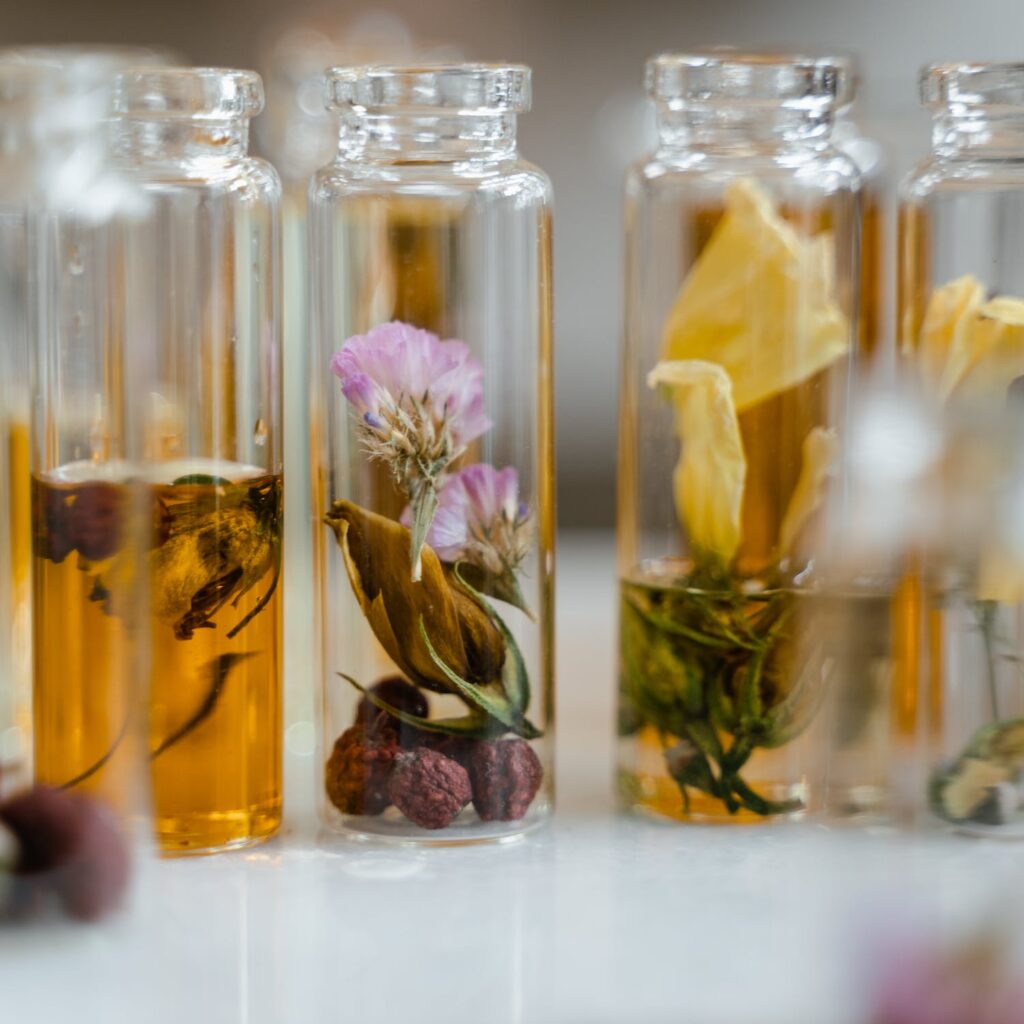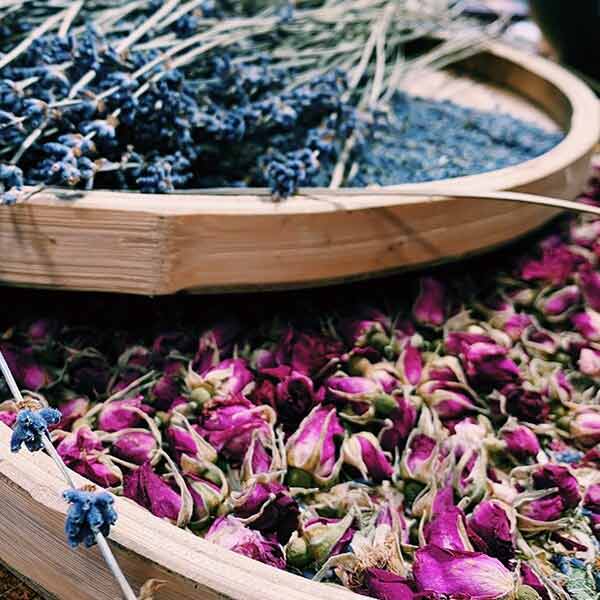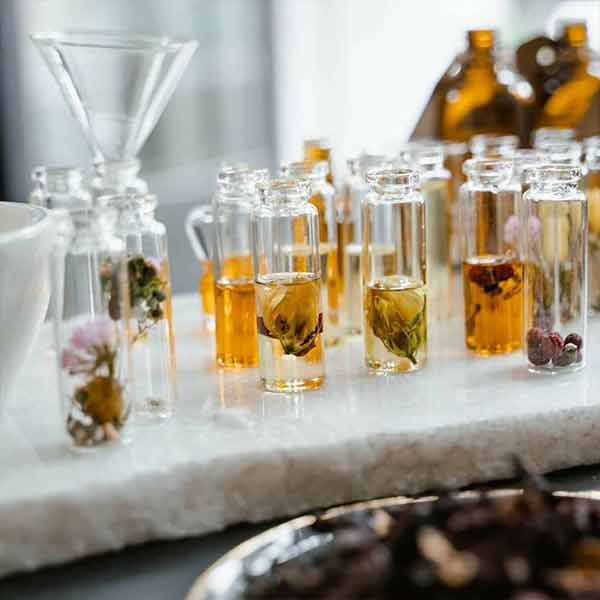Creating a perfume is based on a combination of chemical and creative processes. Behind every fragrance, there's a genuine artistic reflection. In essence, a perfume can be seen as a true olfactory work of art.
It is with unique personal taste, expertise, and originality that a perfumer creates a fragrance, based on specific notes, each having its own place in the olfactory pyramid.
There are top, middle and base notes, which together form a fragrant base.

1. Top notes are the most volatile. They are the ones you smell first when you open a bottle or spray some perfume. Often, they are fresh and light, like bergamot, green tea, or cardamom.
Heart notes take a little more time to come to the forefront, usually a few minutes to a few hours. These are the notes that truly define the character of the perfume and its direction... is it more woody? floral? oriental?
Among the heart notes, you can find fig, rose, lily of the valley, peony, and many others...
Base notes form the foundation of the perfume. These are the notes that you can smell on your clothes or skin at the end of the day, for example. They are heavier, often more intense and lingering, such as oud, patchouli, musk, or sandalwood.
These notes, which form the fragrant base, can be either natural or synthetic.
2. There are several techniques for extracting scents from natural raw materials, with the most common being distillation, extraction, expression, and enfleurage (both hot and cold).
Distillation is frequently used in perfumery. The idea is to create fragrant water vapour from plants. The water is then decanted and separated from the various fragrant components to obtain what is known as the "absolute".
Extraction involves infusing plant materials in water and a solvent. When the solvent evaporates, a sort of paste remains, which can be diluted with alcohol to make a perfume.


Expression is a technique reserved for fruit peels. It involves pressing, decanting and filtering the raw material to recover the fragrant components of interest to us.
Enfleurage is a technique that has been used since ancient times. The process is based on the use of a fatty substance that can naturally absorb odours. The flowers in contact with the fat are then replaced when they lose their fragrance, until the fat's fragrance capacity is saturated. Enfleurage can last up to 3 months, and 1kg of fat can absorb up to 3kg of fragrance from plants. However, this technique is not suitable for the most fragile flowers. Hot enfleurage is therefore used for those that can withstand it, and cold enfleurage (a practice that is still widespread in Grasse) for particularly sensitive flowers.
In cases where it is very challenging or even impossible to extract certain natural notes, perfumers turn to synthetic alternatives, which enhance and complement the well-known notes.
The "pure" is then diluted with more or less alcohol, depending on what you want to obtain (perfume, eau de parfum, eau de toilette...).
The perfume must then macerate for about a fortnight, an essential stage to give the fragrance its strength. During this time, the notes blend well and position themselves in relation to each other, to obtain the most harmonious fragrance possible.